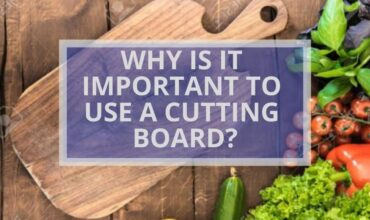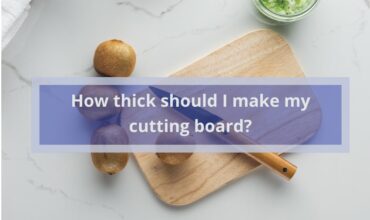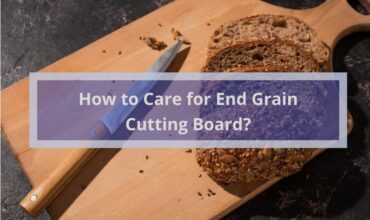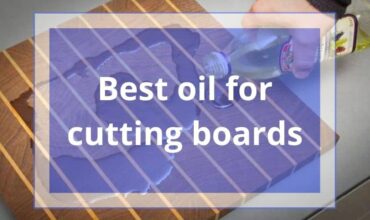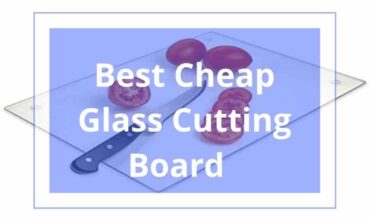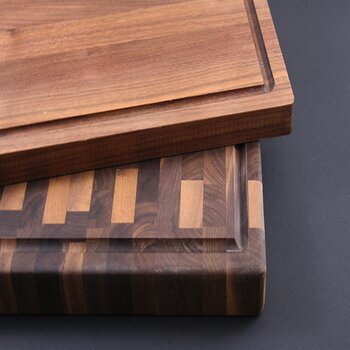
Whether you are a pro chef, an amateur cook, or a housewife, you need to know the different types of wooden cutting boards for more than a reason.
First, to save your hard-earned money and stop spending it on useless cutting boards that will only ruin your precious knife set. And second to make sure you are protecting your food from bacteria and harmful contaminants.
And here we will be showing the difference between end grain, edge grain, and face grain cutting boards and explaining everything about them.
What is the Difference Between End Grain and Edge Grain Cutting Boards?
The terms end grain wood and edge grain wood actually refers to the part where the wood is used to design the chopping board. Edge grain cutting boards are those boards where the edge grain is up.
While end grain cutting boards are those at which the grain is perpendicular to the chopping surface. And each pattern has a different level of durability.
First, End Grain cutting boards
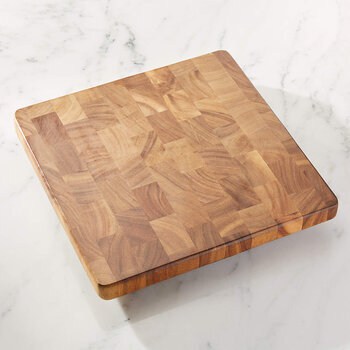
“End grain wood” refers to the end of the wood where you can find the rings, while the “edge grain” refers to the side of the wood.
This type of serving tray or cutting board has a more traditional look.
They look like an end of 2 x 4 inches and are made from end pieces of wood. That’s why they are called “end grain.”
An end grain cutting board is 4 to 15 times more costly than an edge grain block. They are usually thick, durable, and warp-resistant.
The best part about end grain cutting boards is they are softer and gentler on your knife blade; because their short ends are more fibrous and have an open wood-cell structure.
An End grain cutting board also provides your knife blade with a better grip during slicing food.
you need to know that while cutting or chopping your food, some tiny dents form on the surface of end grain boards. but later they will fade away, as the open wood-cell structure is self-healing.( you may also like Forged Knives vs. Stamped Knives: What’s the Difference?)
Read more , Butcher Blocks vs Cutting Boards: What’s the Difference?
What does “self-healing” cutting board mean?
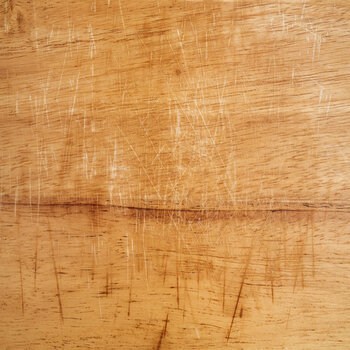
Self-healing is when your sharp blade touches the large cutting board and passes between the ends of the grains. Preventing your chopping board from getting damaged as the resilient wood fiber gets back together after cutting.
Almost all the butcher blocks you can find on the market are made of end grain wood.
The drawback about end grain cutting boards or butcher blocks is that they are heavyweight and absorb moisture easily.
If you have an end grain butcher block or an end grain wooden board, make sure you always season and condition them. We recommend oiling with food-grade mineral oil.
Read more , Best Over the Sink Cutting Board
Second, Edge Grain cutting boards
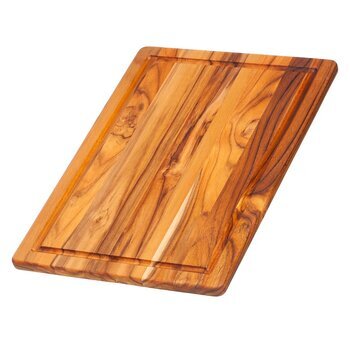
Dulling your blades over time is a problem you will face when dealing with an edge grain board.
An edge grain block is not self-healing, making it more likely to have scratches and knife marks (which means more bacteria, obviously!)
Edge grain cutting boards are made from hardwood strips such as maple, walnut, and cherry, making them thin most of the time. An edge grain cutting board can be made from one kind of wood or a combination of different types of wood.
The cutting surface of these cutting boards looks like the side of a 2 x 4. They are hard on your precious knives, and your razor-sharp blades can cause deep and obvious gouges on them.
Edge grain wooden boards are way cheaper than end grain boards because of their simple construction. But at the same time, they are the best-looking and most attractive kind of wood cutting board. ( You may also like Best Material For a Cutting Board )
You will love to know that Edge grain boards are also considered to be easy to clean and maintain.
We made everything clear about end grain and edge grain cutting boards, and it is time to answer this.
Check also , What Is The Best Natural Oil For Wood Cutting Boards?
What are face grain cutting boards?
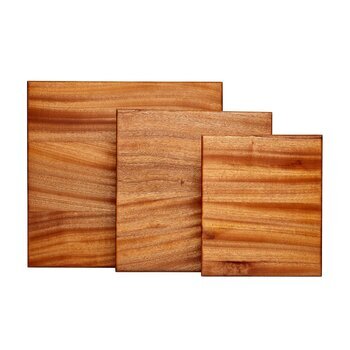
Face grain term refers to the upper and most obvious part of the wood.
A face grain board is usually made by using glue on the edges of narrow wood boards, and they are typically eye-catching and elegant.
A face grain cutting board isn’t as durable as an edge grain cutting board or end grain wood board.
What kind of cutting board do you use for butcher block?
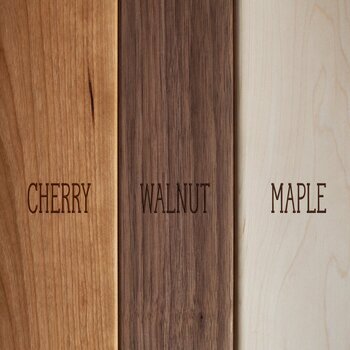
A butcher block is usually made of End Grain wood as hard maple, birch, teak, and walnut.
A butcher block is the heavyweight and large cutting surface or block you find in old butcher’s or even modern kitchens for heavy-duty chopping.
Also check , Best Material For a Cutting Board
Final thoughts
A cutting board is the pro chef’s best friend for a good reason! whether it is a plastic cutting board, glass cutting board, or wood cutting board. (You already know that a wooden cutting board is always the best choice).
Most chef experts recommend having not only one but two cutting boards.
One for cutting ready-to-eat foods, veggies, fruits, and cooked foods. And another cutting surface for cutting meats, poultry, and seafood.
So you should choose the right cutting boards that meet your needs and suit your kitchen, cooking, and budget.
We wish you a happy and safe cutting experience!
